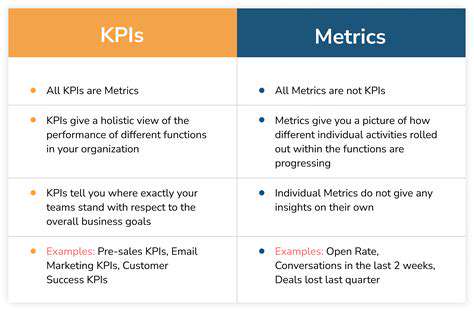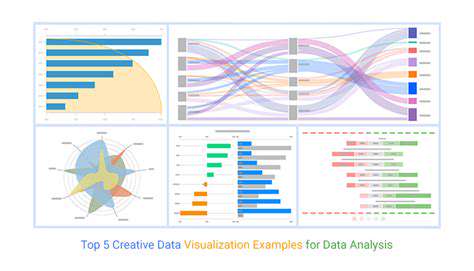Custom Reports in GA4: Tailoring Your Data Views

Building Custom Reports with Dimensions and Metrics
Defining Dimensions and Metrics
A crucial aspect of building custom reports in Google Analytics 4 (GA4) is understanding and utilizing dimensions and metrics. Dimensions provide context and categorization to your data, while metrics represent measurable values. For instance, a dimension might be Source/Medium which tells you where your website traffic originated (e.g., organic search, social media), and a metric could be Sessions, which quantifies the total number of user visits. Mastering the use of these elements is fundamental to creating reports that accurately reflect your website's performance and user behavior. Careful selection of dimensions and metrics is essential for pinpointing specific trends and patterns within your data.
Choosing appropriate dimensions and metrics directly impacts the insights you gain. If you're focused on understanding user engagement, you might include dimensions like Page Title and Event Name, alongside metrics like Average Session Duration and Bounce Rate. Conversely, if you're analyzing marketing campaign effectiveness, you might use Campaign Name as a dimension and Conversions as a metric. The key is to align your selections with your specific business objectives and questions. By thoughtfully selecting dimensions and metrics, you can craft reports that are not only informative but also directly actionable.
Crafting Custom Reports in GA4
Once you've defined your desired dimensions and metrics, you can begin building custom reports in GA4. This involves selecting the relevant data and arranging it in a way that highlights key patterns and trends. The platform offers various visualization options, allowing you to present your findings in charts and tables that are easily understood. GA4's custom reporting features provide a powerful tool for exploring and analyzing data beyond the standard reports, enabling a deeper understanding of your website's performance and user behavior. Tailoring these reports to specific business needs is crucial for effective decision-making and optimization strategies.
Building custom reports in GA4 allows for a deeper dive into your data, going beyond the standard reports and providing more specific insights. This is critical for identifying areas needing improvement and understanding what drives success on your website. By combining dimensions and metrics effectively, you can generate customized reports that provide actionable insights to optimize your marketing strategies and overall website performance. The flexibility of custom reporting empowers you to focus on the metrics most relevant to your business objectives, enabling data-driven decision-making.
Leveraging Data Visualizations for Effective Analysis

Data-Driven Insights
Data visualizations are powerful tools for transforming raw data into easily digestible insights. They allow us to quickly identify patterns, trends, and anomalies that might otherwise be hidden within large datasets. By presenting information in a visual format, visualizations make complex information accessible to a wider audience, fostering a deeper understanding of the data's story.
Visualizations facilitate quicker comprehension and decision-making. A well-designed chart or graph can communicate a wealth of information in a fraction of the time it would take to read through extensive tables or reports. This speed and clarity are crucial for organizations needing to react swiftly to market fluctuations or internal performance issues.
Effective Communication Strategies
Visualizations are essential for effective communication, enabling stakeholders to grasp complex information quickly and easily. They transcend language barriers and cultural nuances, allowing for a shared understanding of the data's implications.
Clear and concise visualizations can significantly improve communication effectiveness. By presenting data in a visually appealing and understandable manner, organizations can ensure that their message resonates with the intended audience. This, in turn, fosters trust and engagement, leading to better decision-making.
Enhanced Decision-Making Processes
Data visualizations offer a unique perspective on data, enabling a deeper understanding of relationships and patterns that might not be apparent from traditional data analysis methods. This enhanced understanding, in turn, empowers better decision-making processes.
Visualizing data allows for a more holistic view of the situation, enabling decision-makers to identify potential risks and opportunities. A well-designed visualization can highlight critical trends and insights that might otherwise be missed, ultimately leading to more informed and strategic choices.
Improving Data Understanding and Interpretation
Data visualizations provide a concrete and tangible representation of data, making it easier to understand and interpret. By translating numbers into visuals, organizations can uncover hidden patterns and relationships that might otherwise remain obscure.
Through visual representations, data becomes more accessible and engaging. This accessibility fosters a deeper understanding of the information and encourages a more proactive approach towards data analysis and interpretation.
Understanding the nuances of your data is crucial. Visualizations can help you to see these nuances and how different factors influence your outcomes. This leads to more accurate projections and more effective strategies for the future.
Read more about Custom Reports in GA4: Tailoring Your Data Views
Hot Recommendations
- Personalizing Email Content with User Behavior
- Geofencing for Event Attendance Tracking
- Reputation Management on Social Media
- UGC Beyond Photos: Videos, Testimonials, and More
- The Future of Data Privacy Regulations
- Accelerated Mobile Pages (AMP) Benefits and Implementation
- The Future of CRM: AI and Voice Integration
- Google Ads Smart Bidding Strategies: Maximize Value
- Common A/B Testing Pitfalls to Avoid
- Local SEO Strategies for Small Businesses